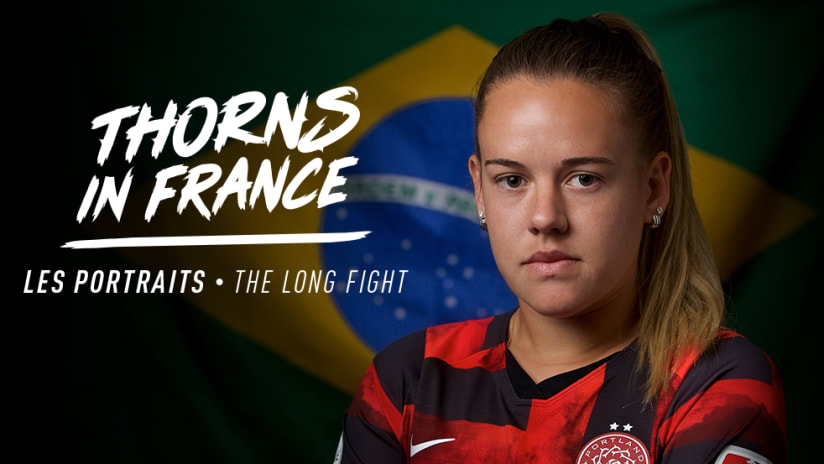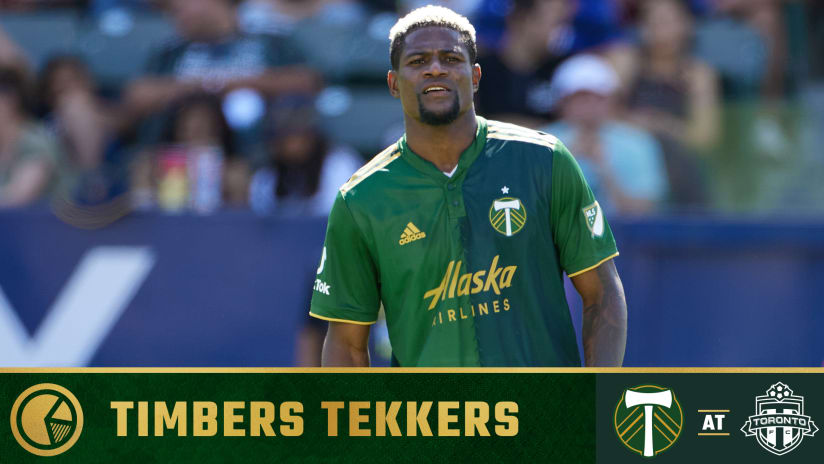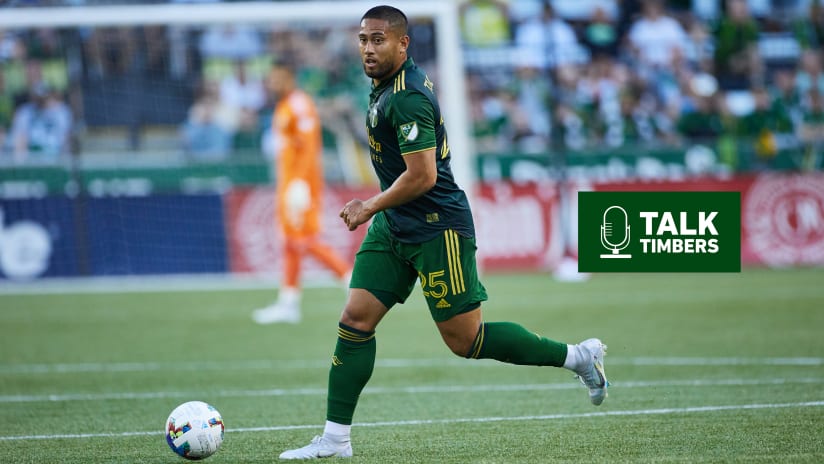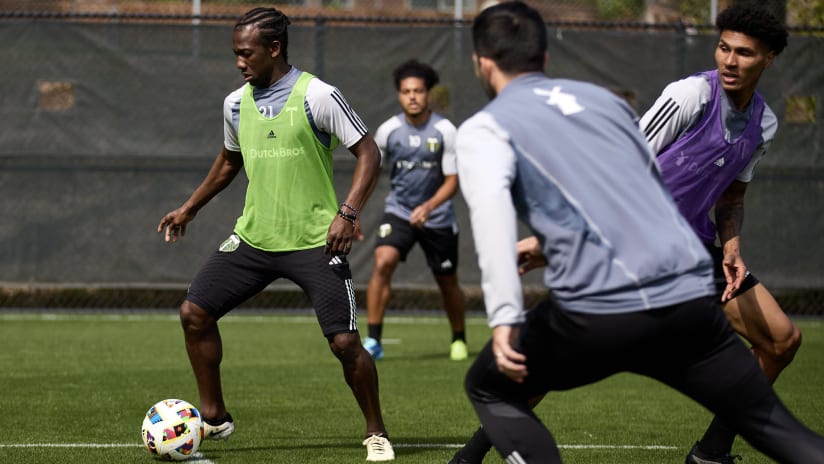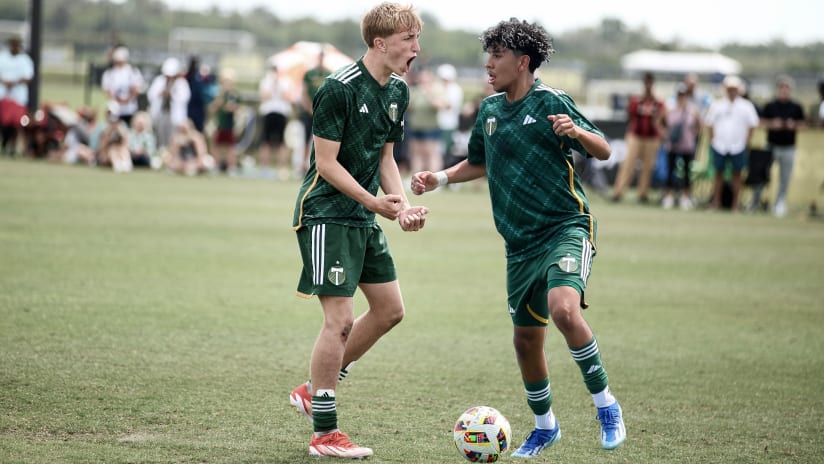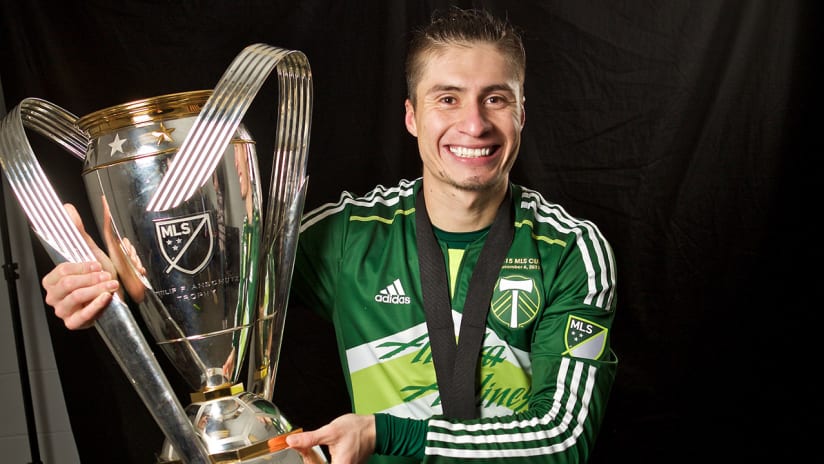PORTLAND, Ore. – The hallmarks of her journey sound familiar, evoking the childhoods of Portland Thorns FC teammates who grew up in places like British Columbia, Colorado, and New Jersey. For this generation of players, they're subplots that become women’s soccer staples, whether you’re growing up in the suburbs of Denver or live in the most southern state in Brazil. From playing against boys in her earliest soccer moments to having a key family figure guiding her path, most of the highlights of Andressa Cavalari Machry’s backstory take on a familiar form.
Andressinha, as the Thorns midfielder has come to be known, has had to answer the questions before. Her father? He was the one who pushed her, having wanted to be a professional player himself. And in her soccer’s formative stages in Roque Gonzales – a city just north of Argentina, and the Brazilian state of Rio Grande do Sul – her first challenges come on the streets, in the famed, improvised games of Brazil, proving herself of against the next generation of boys who dreamed of a national-team future.
“There were a lot of times that I’ve embarrassed a boy on the soccer field,” she says, digressing into stories about rainbows flung over dismissive kids in those streets of her home. Drifting into her past, her Portuguese becomes lyrical.
“When I made my best plays, it was always dribbling,” she remembers. “It was always just the dribbling that made the boys embarrassed – and left everyone laughing, and screaming.”
It’s the type of player she is, one that fits nicely into the image we keep of Brazil’s famed jogo bonito. Imaginative and considered on the ball, her touches are more brushstrokes than mandates, in their more artistic moments. More than Pele or Marta, her style evokes Ronaldinho, even if her career’s path has been more muted. As with the Barcelona icon, there’s a sense, at times, that Andressinha is playing for something more than the result – that her connection with the ball is more important than her connection to the game itself.
It’s another way in which the 24-year-old Brazilian’s development parallels teammates like Tobin Heath and Lindsey Horan – another of the hallmarks that run in parallel. But whereas most women’s stars trace their first experiences back to when they were eight, nine, 10 years old, Andressinha was six when she was drawn into the game. And while almost all of the stars we know developed in patriarchal sports cultures, Andressinha grew up in country that was something more, one that not only treats its soccer with obsessive sincerity but struggles with women’s place in the sport.
“For sure, in Brazil,” she says, “it's very different being a woman in soccer.”
To understand that difference is to understand how far she’s has come.
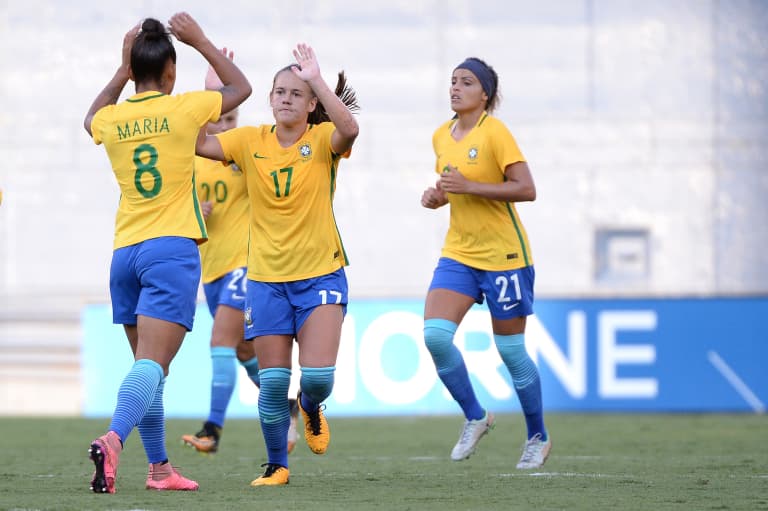
Image: USA Today Sports Images
Andressinha’s time in the North American soccer spotlight has been so short, her story still feels new. On the scene in 2015 as a 20-year-old at the Canada World Cup, the midfielder then known as Andressa signed with the Houston Dash, albeit with a delayed debut. As she traveled from one major tournament that year to another, jumping from the World Cup to the Pan American Games that were hosted in Toronto, Andressa’s story was told as more like a soccer homily than something attached to a real person.
She was billed as the next version of Marta as she progressed through Brazil’s ranks – a trope of Brazilian soccer that’s always better theory than practice. The lore around the country’s men’s team means every generation’s new male talents are cast as a new version Pele, among the best players the world’s ever produced. On the women’s side, it’s much the same, where the six World Player of the Year honors Marta’s won not only claim a place in another best-ever conversation but cast Brazilian prospects a second version of a singular star.
Drastically different in both stature and style, Andressinha was never going to be a Marta; nor was she going to be a Formiga, Cristiane, or any of the other legends still active with the Seleçao. In style, she may be a Ronaldinho, but even that is a clumsy parallel. In places that take time to talk about women’s players as individuals, the analogies can have context, with their limits explained, once teased out. In other places, all Brazilian soccer players are either Pele or Marta.
Amid their lies, though, the comparisons carry some hidden truths, ones that speak to the pressures on aspiring women’s players in Brazil as well as the lack of imagination around them. To have Marta held up as a standard would be as unfair as every American prospect expected to become Michelle Akers. But at least in America, you can also be a Mia Hamm, or an Abby Wambach. In Brazil, there’s time for Marta but not enough time for the myriad players who might offer a different style.
“[Brazilian national team players] always comparing being a woman on the soccer field in Brazil to being in United States,” she says, summarizing an array of factors in a barely over one line’s worth of words. “In Brazil, it seems so far from the U.S.”
She talks about the structure of the professional game in her home country, but she also talks about the expectations female players have growing up in Brazil, something becomes a “weight.”
“[The men] have won five World Cups,” she explains, “and [fans] feel the women's soccer team, we haven’t won a championship in any major competition yet.”
It creates a paradox. Female players have to deal the expectations of Brazil’s soccer tradition. They just don’t get the benefits. The team has finished runner up at three major tournaments in the last 15 years (2007 World Cup; 2004 and 2008 Olympics), but players have spread out across three continents looking for the infrastructure they need to keep up with their American counterparts, to pick a country. There, as well as in Australia, England, France and Germany, ever-improving national teams develop in tandem with ever-maturing leagues back home.
The vision of Brazil’s soccer brand, however, has a way of overshadowing its players’ reality between tournaments.
“It's a lot of weight,” Andressinha says. “Brazil carries a stronger tradition in soccer. [The expectations] are about that.”
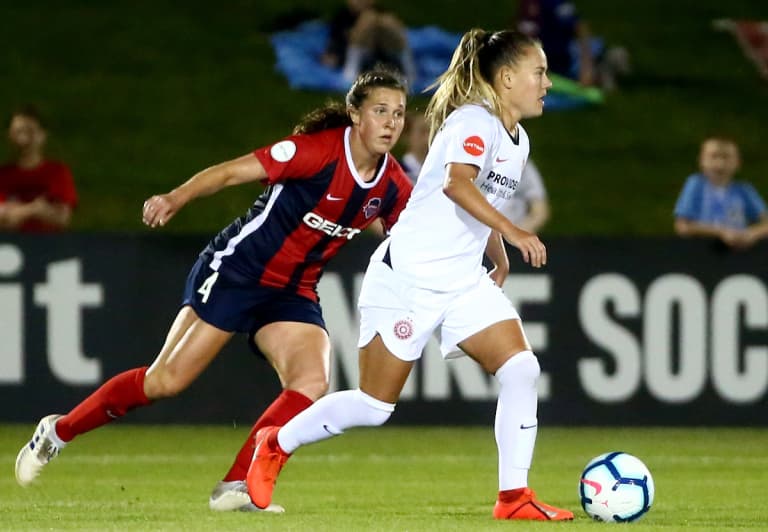
Image: ISI Photo
Six-and-a-half years beyond her national-term debut, “Andi” can narrate from authority within that context, though a matter-of-fact shrug to the follow-up question says more than her words. Being Brazilian is the only reality she’s ever known. She can speak to the lives of American talent because, ever since she was 20, she’s played professionally in the States. She knows the players, the pipeline, how they’re supported, even if she’s never experienced that reality for herself. She knows what it means to be not Brazilian, by now.
Her reality, though, has always contained her country’s expectations, something evident in the early promise she showed on the ball.
“I started very young,” she remembers, smiling while making Portuguese’s “very” into a four-syllable word. “I started to play soccer when I was six years old, and I started to play with boys. In Brazil, it's very common, since there were not too many girls playing soccer.”
She describes a circle of support around her, one that’s been present “during all of my journey.” Questions about whether she should or should not be playing were never a problem. Instead, her path was defined by how often she could play, and fueled by a father that was living out aspirations through her.
“He was the main motivator for me,” she says, about her father, Elizeu. “He had the dream to be a soccer player, but he didn't have the support of his family. But he was able to see on me the talent, so he did everything that he could to support me throughout the journey.”
This is, again, where Andressinha’s journey feels familiar to most, yet different in magnitude. Like youth athletes in the United States, her time from childhood into her teenage years – when affinity can give way a true prospect’s profile – involved a parent’s sacrifice to make practices possible, games accessible, and equipment available. From the time she tried out for her local club, Pelotas, as a 14-year-old to the moment she moved to a team at the top-level of Brazil’s game (S.E. Kindermann, located nearly eight hours north), the only meaningful difference between Andressinha’s life and that of an American teen was Brazil’s soccer microscope.
When her professional journey started, Andressinha’s path diverged. Kindermann is a successful team, winning both their country’s league (four times) and domestic cup competitions during her time there, but the world that surrounded that success was telling. She was the team’s leader in goals on multiple occasions, yet she saw the reputation of women’s professional soccer in her country play out.
“If you think about structure,” she says, the word typically referring to the level of investment and professionalism around club, league, or country, “you will think about [an environment] being professional. That’s what we talk about (when trying to improve) the women's teams” in Brazil.
The criticism sounds familiar, as if describing any number of countries, until you ask about solutions. Then, you see where the “weight” of Brazil’s expectations meets the player’s reality. While some players around the world are beginning to see the first fruits of their fights – the first signs that people are waking up to the women’s athlete’s plight – Andressinha offers a more sobering reminder. In some places, that progress seems so far off.
Consider her thoughts on whether winning a World Cup would change how women’s soccer is supported in Brazil:
“I think that would not solve the problem, because the issue with that is bigger,” she says. “Brazil needs to change the structure, change how decisions get made,” with regards to the women’s game’s growth.
“The women's (national) team is very young now. It’s like a teenager,” she says, not talking about the players’ ages, but the time the team’s held the country’s attention. “If we win the World Cup, eyes are going to be towards us for a while. But it's going to be really short.”
Whether the women’s national team wins or loses, the country will perceive it as any teenagers’ accomplishment. There will be pride. There will be celebrations. A head’s nod will be made to the program’s progress. But ultimately, like anything from something so young, people will move on. They’re not yet invested enough.
“So,” Andressinha says, “changes need to be made in other aspects in order for women be valued on the soccer field in Brazil.”
These aren’t the type of thoughts we associate with Andressinha. Perhaps here, in her second country, we don’t associate much with her, at all. In the minds of even this area’s most ardent women’s soccer fans, she’s young, skilled, but still carries a bit of mystery. We see her as a creator, with an enviable amount of technical quality, even if that’s the same view we carried out of the World Cup four years ago.
With her 63 NWSL appearances spread out across six seasons, there’ve been few stretches where Andressinha has been able to change her first impression. For some, she’s still the player that impressed in Canada, eventually winning prominent roles of Houston over the next two seasons. She’s not, necessarily, a woman of 24 capable of providing perspective on her country’s game. She’s still, to some, a prospect developing a profile.
That she’s, now, providing a learned perspective on her country’s national game – a perspective hard to imagine coming from a 20-year-old – tells us we’ve missed something about Andressinha. Part of that is from not having access, with her time from six to 20 taking place at the other end of the world; with language separating an English-language world from a Portuguese-speaking star. But most of the recent part is from not asking enough. Behind a language barrier, having to shift countries and then cities within a new league, “Andi” is reemerging under the radar.
But one part of that emergence, on the field, took center stage two weeks ago. Standing over a dead ball in Orlando, given a chance she wouldn’t have if other Thorns hadn’t previously left for the World Cup, Andressinha produced a moment of magic that would rival one from Tobin Heath, being Pride goalkeeper Haley Kopmeyer to register her first goal in Portland.
“I think I improved a lot as a player since the World Cup in Canada,” she says, now, even though she won Player of the Match honors at points during that tournament. “Even though I was really young in Canada, I think that I did a really good job … But yes, I believe that I have improved a lot.”
Whether the same could be said about her national team, though, is more debatable. For around a decade, Brazil had an obligatory place among the favorites at major tournaments, partly because of their string of World Cup and Olympic close calls; partly because of the presence of talents like Marta, Cristiane and Formiga; and partly because they were a bit of an unknown. Games in the middle of World Cup cycles were rare for the Seleçao. Their federation tended to concentrate their games around major tournaments.
That’s changed in recent years, though, and unfortunately for Andressinha’s team, the results haven’t been flattering.
“Right now, the Brazilian national team, we’re not in a very good moment,” she explains. The team hasn’t won a match since July 2018, with Brazil fortunate that South America’s World-Cup qualifying took place 14 months before the competition starts.
“We’ve coming off nine-straight losses,” she says, her head wagging side-to-side, slightly, as she looks at a spot on the room’s floor. “We have to overcome that … We have to prove to everyone that we are a good team.”
Here, too, you see the reality of being a women’s soccer player in Brazil. The team has major questions heading into the World Cup, and unlike most contenders for this summer’s tournament, they’ll have to find their answers after the first kickoff. But it’s the World Cup, and they’re playing for Brazil. There’s only one outcome that will move the needle.
“We are not too confident right now because of the last bad results,” she admits. “But we have to be together … It's the World Cup, and we have to overcome this moment.”
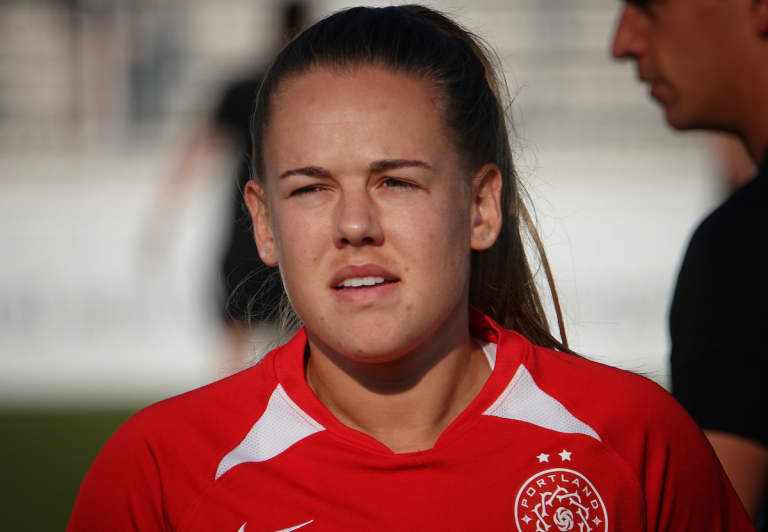
Image: ISI Photo
It’s the only time Andressinha reveals any hint of the pressure. She’s evolved to survive in women’s soccer’s strange spotlight, one that’s even stranger where she’s from. The World Cup light is shined on you every four years, while the rest of the cycle, you go unnoticed. In the United States, those swings are pronounced, but they’re less extreme than most. In Brazil, those swings go beyond recognition.
Once every four years, you’re expected to be the best in the world. The rest of the time, you’re overlooked. Andressinha says her team’s goal, this summer, is “to go as far as possible in the World Cup, of course,” even though that may not be enough to move the needle.
If there’s one contrast that sums up what she’s had to overcome, the extremes of a Brazilian footballer maybe it: the expectations that start sooner; the weight that becomes heavier; but the upside that’s unimaginable. It produces a path where the path itself is an obstacle, with the long odds of becoming an elite athlete never offset by rewards. It truly becomes the love of the game that drives players like Andressinha, something that’s not rare in world soccer, but something that’s tinged with pathos when compared to the lives of Brazil’s male stars.
That love of the game, and it’s place within her world, comes through when asked about her journey’s most important part.
“I think it is about not giving up,” she says. “In Brazil there are a lot of girls that have the same dream, to become a soccer player, and they see us as role model. And it's important not giving up in the first obstacle, in the first barrier.”
For Andressinha, on one hand, that barrier was in place when she was six years old – from when she was doing rainbows over boys in the streets of Rio Grande do Sul; to when the game’s professional realities took hold. It’s a barrier that will be with her when she takes the field in France, next month, even if it’s one she’s already overcome.
For Andressa, though, it’s been a long fight, one that’s left her on the verge of a second World Cup. No matter the outcome next month, the fight will not be over.

